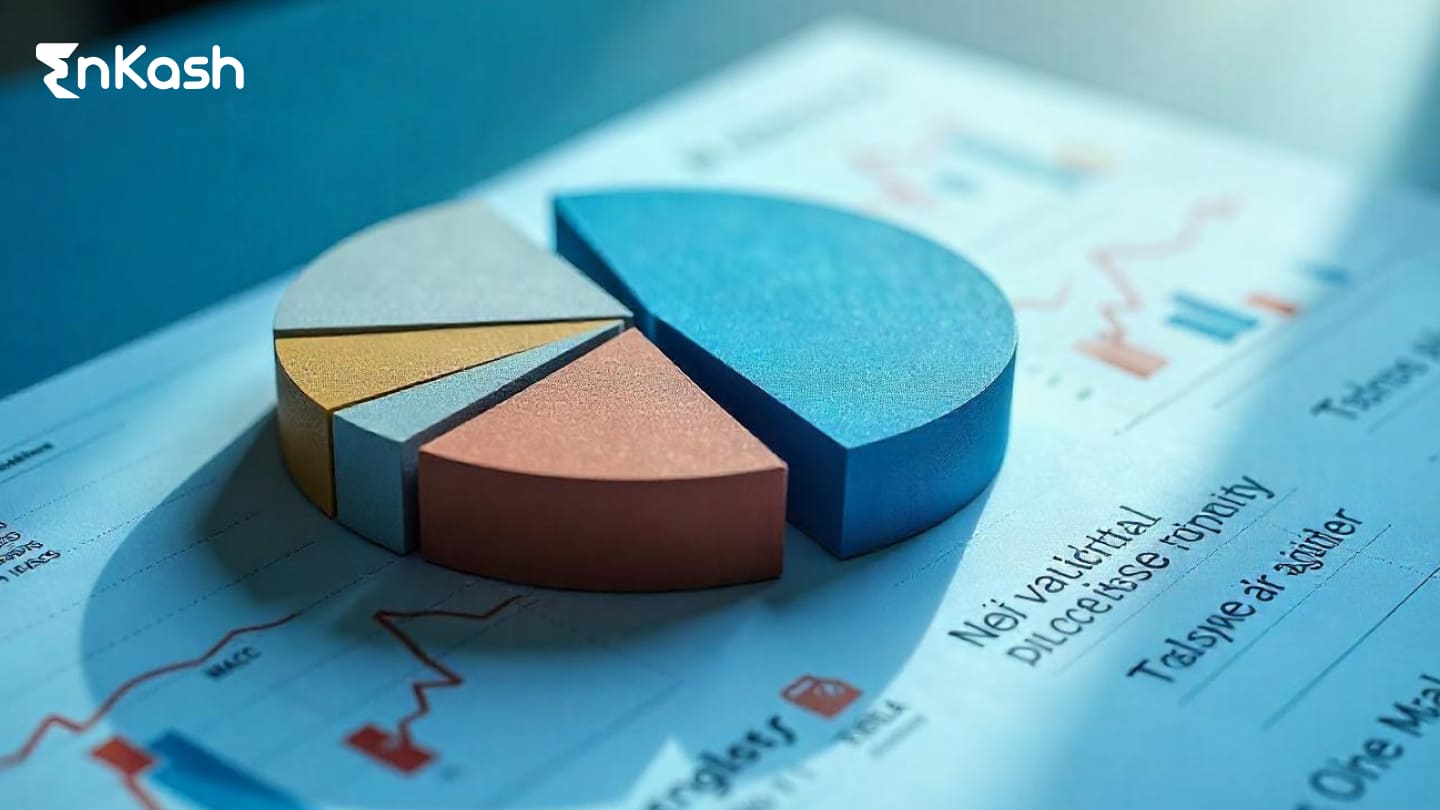The cost of capital is an important financial concept. It refers to the costs involved in raising capital to support and expand a business. It includes capital from equity, debt, financial instruments and so on. The cost of capital must be carefully calculated as it helps in making investment decisions, assessing financial risk and optimizing capital structure. Knowing about the various types of cost of capital and how to calculate it is crucial as it helps businesses maintain profitability, growth and gain competitive advantage, especially in dynamic market conditions.
Cost of Capital Definition and Overview
The cost of capital is one of the most fundamental concepts in financial management as it helps companies plan their growth, profitability and overall financial strategy. Put simply, the cost of capital is the expense that a business incurs to fund its operations – be it through debt or equity. It is the indicator of the rate of return required by investors and creditors of the business in return for offering funding. Learning the cost of capital definition is important as the concept can affect investment decisions in the assessment of new projects.
The cost of capital becomes all the more critical in the fiercely competitive Indian financial market where efficient resource allocation is a must to survive. If Indian companies wish to remain sustainable and grow over the long term, it is imperative that they are able to manage their financial resources efficiently and keep their cost of capital, as well as other costs of doing business, as low as possible.
It is also a fundamental reference point for companies to judge the profitability of their investment opportunities. It is usually calculated by taking into account the cost of equity and the cost of debt. Say a firm’s cost of capital is 10%, it won’t spend money on anything unless the return is more than 10%. If the return falls below this benchmark, the firm will see negative growth and thus its owners, the shareholders, will lose value.
The Weighted Average Cost of Capital (WACC) is a metric that provides the overall cost of capital considering different finance sources. The WACC provides a realistic picture of the financing costs, helping companies understand if their projects will generate sufficient returns that cover the cost of capital.
As the economic environment in India becomes more competitive, wherein companies want to compete globally, managing cost of capital becomes crucial. Getting the mix of debt and equity finance just right will optimize financial returns, but an unbalanced cost of capital can lead to financial tension.
Knowing the cost of capital definition, how to calculate it and its implications is crucial to any business. It is a fundamental metric that provides insights into a company’s overall financial health and also indicates how well a company can ride out risks and handle investments in the future.
Importance of Cost of Capital in Financial Management
The cost of capital is a key factor in a company’s decision-making regarding its financial processes. Companies looking to sustainably grow, especially in India’s competitive market, must understand the importance of cost of capital. It affects many key aspects of financial management, such as capital budgeting, project selection and financial strategy.
Decision-Making in Capital Budgeting
The cost of capital has a crucial role in capital budgeting. When deciding whether to embark on a new project or investment, firms check if the return on a proposed investment is higher than the cost of capital. This is especially true for companies working with low margins. If the anticipated return on a project is less than the cost of capital, the company would decrease its shareholder value. It is for this reason that the cost of capital in financial management is used as the benchmark for assessing investment profitability.
Optimizing Capital Structure
The cost of capital also becomes a key determinant of how a business finances its operations by using a combination of debt and equity. In India, for instance, firms have to compare the cost of debt which, thanks to tax incentives, is low, with the cost of equity, which is higher as it reflects the returns that shareholders expect. By optimizing the capital structure, a company’s overall cost of capital is reduced, as is the financial risk, because too much borrowing raises financial risk. On the other hand, using too much equity reduces earnings per share. So the right balance is important.
Performance Evaluation
One of the most prevalent ways that the cost of capital is used is to evaluate corporate performance. By comparing actual returns earned on investment (ROI) against the cost of capital, you can see if a company is making enough returns to cover the cost of financing. This is especially relevant in India, where changing economic conditions and high borrowing rates could make it hard for companies to surpass their cost of capital.
Risk Management
The cost of capital allows firms to mitigate risk. It offers information about the minimum return that creditors and investors require. It also helps assess new projects and investments so companies avoid taking on projects that risk pushing them into bankruptcy.
Also Read: What is Managerial Accounting
Types of Cost of Capital
There are different types of cost of capital which represent how companies can acquire or utilize capital. Companies must learn about these types to make efficient and informed financial decisions.
- Debt Cost: The cost a company faces in order to raise funds in the form of debt instruments (loans or bonds). The calculations include interest payments and other such fees. Companies in countries such as India, where debt finance is commonplace, are able to benefit from the tax-deductibility of interest, which results in a decrease in the net cost of such debt.
- Equity Cost: The cost of equity is the return the investor expects when buying shares in a company. This is a combination of dividends and capital appreciation. Equity investors require a greater return, on average, compared with debt holders, because equity holds greater risk.
- Cost of Preferred Stock: Preferred stockholders are paid a fixed amount in dividends, which is effectively the cost to the firm to raise capital through preferred stock. Preferred stock is usually less expensive than common equity but has the drawback that cash dividends must be paid on a regular basis.
- Weighted Average Cost of Capital (WACC): WACC is the average cost of capital across all sources of capital, weighted by their proportion to the total capital. It typically includes debt, equity, and preferred stock.
- Marginal Cost: This is the cost of raising any more capital, beyond what has already been mobilized through the existing capital structure. Firms must consider this cost when they seek to expand or take on new projects.
- After-Tax Cost: It is the cost of capital after making adjustments for tax benefits, especially associated with debt financing. This occurs because interest payments are tax-deductible, and this lowers the effective cost of capital after taxes.
Also Read: What is Financial Accounting
Methods of Calculating Cost of Capital
Various methods are used to compute the cost of capital, each of which sheds light on what a company actually pays as the cost of financing its business. Let’s understand the calculation methods below:
- Dividend Discount Model (DDM): Here, the cost of equity is calculated by the present value of expected future dividend payments. This model is most relevant to firms with a stable dividend payout history as it offers a simple way to consider what return equity investors require. The formula is:
Cost of Equity = Dividend per Share \ Price per Share + Growth Rate Cost
- Capital Asset Pricing Model (CAPM): CAPM is another method used to calculate the cost of equity. It considers the risk-free rate of return, the expected market return, and the company’s beta (which measures the stock’s volatility relative to the market). It takes the risks into account that come with investing in equity and sets realistic expectations for returns for businesses.
- Bond Yield Plus Risk Premium: It adds a risk premium to the yield of comparable bonds to determine the cost of debt. It provides a more realistic measure of what it costs to borrow money. This technique is useful in India, where bond yields change with economic conditions.
- Weighted Average Cost of Capital (WACC): Being an all-inclusive measure, the WACC is the average cost of capital calculation that weighs each source of financing (equity, debt and preferred stock) based on the percentage of their use in the company’s capital structure. The method helps a business in calculating its overall financing cost and ensures that the investment decisions made by it are balanced.
- Marginal Cost: The marginal cost is the cost associated with raising more funds over the current level of funding. It is an important metric for growing businesses and new ventures, representative of the cost of raising funds at current rates.
Factors Affecting the Cost of Capital
There are several internal and external factors that have the potential to affect a company’s cost of capital. Companies must study these factors as it can influence their ability to secure financing.
Interest Rates
The prevailing interest rate is one of the external factors influencing the cost of capital. In India, the rate of interest changes according to Reserve Bank of India policies and market conditions. The higher rate of interest increases the cost of debt and makes borrowing expensive.
Market Conditions
The cost of equity also depends on market volatility and investor sentiment. When the economy isn’t performing well, investors may demand higher returns to compensate for increased risk. This in turn can raise the cost of capital for companies.
Risk Profile
The risk profile of a company (as measured, by its credit rating, and by operational risks) determines both the cost of debt and the cost of equity. The higher the risk, the higher the expected returns from investors and creditors. This can increase the expected cost of capital as well.
Company Performance
Internal factors, such as prospective profitability and financial stability, also impact the cost of capital. Firms with sound business prospects and good cash flow can frequently obtain finance at relatively favorable costs.
Economic Factors
Broader economic factors, such as inflation rates as well as GDP growth rate can affect the cost of capital.
Strategies for Managing the Cost of Capital
Companies that want to remain financially efficient and profitable must learn how to manage their cost of capital. Let’s look at strategies that can help achieve such business objectives:
- Capital Structure Optimization
This strategy involves determining the optimal combination of debt and equity to minimize the cost of financing. Analyzing financial performance, risk factors and market conditions should help optimize capital structure so that the total expense is brought down and returns are enhanced. - Risk Management
Successful risk management directly translates into containing the cost of capital. As companies reduce their operational and financial risks, they also lower the perceived level of risk for a future investor or lender. This will subsequently reduce both the cost of debt and cost of equity. Diversifying operations across multiple lines of business and having solid financial controls in place can help reduce overall risks. - Diversification of Funding Sources
Using the capital markets to gain access to a broader pool of funds will help reduce the dependency on any singular source of financing. It could help stabilize the cost of capital, particularly during periods of market fluctuations. Flexible funding sources like banks, bonds and equities would enable companies to better manage their finances. - Cost of Capital Benchmarking
By benchmarking their cost of capital against industry peers, a company can evaluate its capital allocation decisions and seek to improve them going forward. This will help it maintain a competitive position, and to hone its capital structure to optimize its financial performance.
Also Read: Difference between Cost Accounting and Financial Accounting
Conclusion
Cost of capital helps companies make better financial decisions, structure the capital more appropriately, and develop a better long-term financial strategy. Accurate calculation of cost of capital, such as through methods like WACC, CAPM, or DDM determines how current resources could be allocated to maximize the company’s assets today and in the future. Cost of capital which comprises debt, equity, preferred stock and other factors like interest rate and market conditions are the key determinants of a firm’s financial policy. In the present competitive business environment, effective management of the cost of capital is vital for sustained profitability and growth of the business in India.
FAQs
What is the relationship between the cost of capital and business risk?
Business risk directly influences the cost of capital. Companies with higher business risk generally face a higher cost of equity and cost of debt because investors and creditors demand a higher return to compensate for the increased risk.
How does inflation affect the cost of capital?
Inflation can raise the cost of capital by increasing interest rates, which in turn raises the cost of debt. Additionally, inflation reduces the real returns for investors, leading to higher expectations for equity returns.
Can the cost of capital change over time?
Yes, the cost of capital fluctuates over time based on factors such as interest rates, market conditions, the company’s financial performance, and changes in its risk profile.
Why is the cost of capital higher for startups?
Startups face higher risks, limited financial history, and uncertain profitability, leading to a higher cost of equity. Additionally, they may have limited access to cheap debt financing, further raising their overall cost of capital.
How does capital structure optimization lower the cost of capital?
Optimizing capital structure involves finding the right mix of debt and equity to minimize the overall cost of capital. Companies that balance these sources effectively can reduce financial costs while maintaining flexibility.
What role does the cost of capital play in mergers and acquisitions?
In mergers and acquisitions, the acquiring company uses the cost of capital as a benchmark to evaluate whether the acquisition will generate sufficient returns to justify the investment.
How do changes in the tax regime impact the cost of capital?
Changes in tax policies, such as corporate tax rates or tax deductions for interest payments, can significantly alter the cost of debt and overall cost of capital by either increasing or reducing the effective cost of borrowing.
What happens if a company’s return on investment (ROI) is lower than its cost of capital?
If a company’s ROI is lower than its cost of capital, it indicates that the company is not generating enough returns to cover its financing costs, which can lead to value destruction and long-term financial instability.
Can a company influence its own cost of capital?
Yes, companies can influence their cost of capital by improving their credit rating, managing debt levels, maintaining strong profitability, and optimizing their capital structure to balance equity and debt financing.
Why do government bonds influence the cost of equity?
Government bonds represent the risk-free rate used in the Capital Asset Pricing Model (CAPM) to calculate the cost of equity. Changes in bond yields directly affect the risk-free rate and, consequently, the overall cost of equity.








